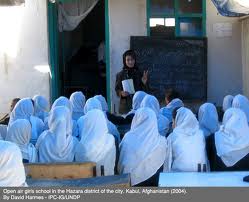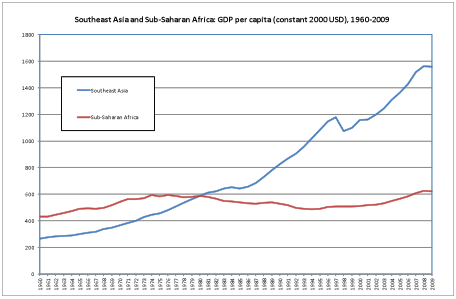by Seth Kaplan | Mar 12, 2012 | Conflict and security, Economics and development
Social cohesion is an underappreciated but crucial element in development, state building, and poverty reduction.
It is an especially important factor in determining whether a state is fragile or not. As I argued in Fixing Fragile States:
Two factors above all others decide how a country’s political, economic, and societal life evolves: a population’s capacity to cooperate (which depends, for the most part, on the level of social cohesion) and its ability to take advantage of a set of shared, productive institutions (especially informal institutions at the crucial early stages of development when formal institutions are usually feeble and ineffectual). . . . These two ingredients shape how a government interacts with its citizens; how officials, politicians, and businesspeople behave; and how effective foreign efforts to upgrade governance will be. Together with the set of policies adopted by the government, they make up the three major determinants of a country’s capacity to advance.
Fragile states are deficient in both these areas. And the combination of political identity fragmentation and weak national institutions works in a vicious cycle that severely undermines the legitimacy of the state, leading to political orders that are highly unstable and hard to reform.
But social cohesion has rarely attracted the attention it deserves from the development community. Dependent on sociopolitical factors that are hard to measure, analyze, and understand, it holds no prominent place in any international agency’s programming. Like almost everything related to the “software” of how states work, it is all too easily ignored.
This may be changing at least at the margins—in conferences and reports. The World Bank, for instance, is using it to discuss jobs in its forthcoming World Development Report. And the OECD recently published Perspectives on Global Development 2012: Social Cohesion in a Shifting World.
This is progress of a sort, but these conferences and reports are missing something important. Instead of seeing social cohesion as a “complex cultural, psychological and social phenomenon,” as Duncan Green put it on his blog earlier this year, they look at economic issues and technocratic solutions. The OECD report, for instance, promotes redistribution via progressive tax reform and increased and more pro-poor public spending; investment in education; protecting poor people against volatility via social protection and improved labor market institutions such as the minimum wage.
There is nothing particularly wrong with most of this agenda, but it does not get to the heart of the matter. A country with high levels of social cohesion would likely have a leadership with an interest in introducing programs that helped the poor. A country that had little social cohesion would likely have a leadership that had little interest in helping the poor. These proposals matter far less than trying to figure out what affects elite attitudes and what might be done to make elites feel that the poor is “one of us.” (more…)
by Seth Kaplan | Feb 16, 2012 | Economics and development

There have been growing demands for greater independent evaluation of foreign aid for at least half a decade now. As William Easterly argued as far back as 2006:
We need independent evaluation of foreign aid. It’s amazing that we’ve gone a half century without this. . . . [Truly independent evaluation of aid would] give feedback to see which interventions are working and give incentives to aid staff to find things that work.
The Center for Global Development summarized the need in its report When Will We Ever Learn? Improving Lives Through Impact Evaluation:
Impact evaluations do not have to be conducted in-house. Indeed, their integrity, credibility, and quality is enhanced if they are external and independent.
It is with this understanding that I read the recent Brookings report on aid to fragile states. (more…)
by Seth Kaplan | Jan 31, 2012 | Economics and development, South Asia
 Homegrown nongovernmental organizations (NGOs) play crucial roles providing social services to the poor, holding governments accountable, aggregating the political power of the disenfranchised, and helping to shape public policies. Their importance to development is well known.
Homegrown nongovernmental organizations (NGOs) play crucial roles providing social services to the poor, holding governments accountable, aggregating the political power of the disenfranchised, and helping to shape public policies. Their importance to development is well known.
But what explains the reason why some developing countries possess so few independent organizations while others have a multitude?
Take Pakistan for instance. Whereas in Bangladesh, the former East Pakistan, NGOs have played such a prominent role that they have supplanted the state in some crucial areas, in Pakistan they are far less influential. Despite having 180 million people, the latter has relatively few important NGOs, think tanks, and independent monitoring organizations (IMOs), as pointed out by former ambassador to Pakistan William B. Milam in his book Bangladesh and Pakistan. Despite a generally positive government attitude (at least towards domestic organizations) and much growth in recent years, the number of important institutions pales in contrast to Bangladesh’s total. (more…)
by Seth Kaplan | Jan 16, 2012 | Conflict and security, Economics and development, South Asia
The Center for Global Development has been organizing a Study Group on a U.S. Development Strategy in Pakistan. It published a report listing its recommendations last June.
 Nancy Birdsall, CGD’s president, has also issued a series of open letters to the US government, such as the one posted recently.
Nancy Birdsall, CGD’s president, has also issued a series of open letters to the US government, such as the one posted recently.
CGD should be praised for undertaking such an initiative. Getting aid right in Pakistan matters a lot to US national interests, as well as to the idea that donors can contribute to state building. No fragile state is as important as Pakistan. Its governance problems have allowed terrorists to use its territory to plan attacks, and make its growing stockpile of nuclear weapons less secure. On the other hand, its strategic location and growing population (the country will be the 4th largest in a generation) ought to make it an important emerging market.
It is also rare that any think tank so closely examines aid policy in a specific country, though the importance of Pakistan means that two Washington organizations have done so in the last year (the Wilson Center issued a report in December).
But, CGD’s approach is flawed. Although the report makes sensible recommendations (on things like opening markets, promoting investment, engaging reformers, and improving USAID operations), it says almost nothing specific about Pakistan. There is no attempt to understand the drivers of its political economy, and the causes of its weak governance. There is no attempt to delve into the reasons why its leadership has consistently failed the country or why its state apparatus works so badly, especially for the country’s tens of millions of poor people. All its ideas more or less repeat verbatim what could be said about U.S. aid to almost any developing country. There is no context. (more…)
(more…)
by Seth Kaplan | Jan 9, 2012 | Africa, East Asia and Pacific, Economics and development
Southeast Asia has consistently outperformed Sub-Saharan Africa in income growth. As the below chart indicates, its inhabitants were much poorer than Africans in 1960; today they are two and one-half times richer. In fact, over the past half-century, the region has been the most consistently successful in the developing world, growing almost continuously (apart from a brief hiatus after the 1997 Asian financial crisis).

Source: Tracking Development
Southeast Asia’s growth has also been much more inclusive than Africa’s. Whereas the latter’s two growth spurts since independence—in the 1960s and 2000s—have yielded little poverty reduction, Southeast Asia has produced spectacular reductions. Indonesia, for instance, reduced poverty from 60 percent in 1970 to 22 percent in 1984. Vietnam reduced it from 58 percent in 1993 to 14 percent in 2008.
Yet, the region does not meet the standard model for economic success, at least as defined by the World Bank and the rest of the Western development community. Governments have historically not been held in check by elections. Corruption is widespread. Governance has rated low on most indicators.
What then explains this success? (more…)



 Nancy Birdsall
Nancy Birdsall
